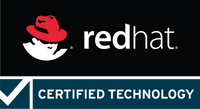- Community Home
- >
- Storage
- >
- Around the Storage Block
- >
- Tech Update: Red Hat OpenShift with HPE Nimble Sto...
Categories
Company
Local Language
Forums
Discussions
Forums
- Data Protection and Retention
- Entry Storage Systems
- Legacy
- Midrange and Enterprise Storage
- Storage Networking
- HPE Nimble Storage
Discussions
Discussions
Discussions
Discussions
Forums
Discussions
Discussion Boards
Discussion Boards
Discussion Boards
Discussion Boards
- BladeSystem Infrastructure and Application Solutions
- Appliance Servers
- Alpha Servers
- BackOffice Products
- Internet Products
- HPE 9000 and HPE e3000 Servers
- Networking
- Netservers
- Secure OS Software for Linux
- Server Management (Insight Manager 7)
- Windows Server 2003
- Operating System - Tru64 Unix
- ProLiant Deployment and Provisioning
- Linux-Based Community / Regional
- Microsoft System Center Integration
Discussion Boards
Discussion Boards
Discussion Boards
Discussion Boards
Discussion Boards
Discussion Boards
Discussion Boards
Discussion Boards
Discussion Boards
Discussion Boards
Discussion Boards
Discussion Boards
Discussion Boards
Discussion Boards
Discussion Boards
Discussion Boards
Discussion Boards
Discussion Boards
Discussion Boards
Community
Resources
Forums
Blogs
- Subscribe to RSS Feed
- Mark as New
- Mark as Read
- Bookmark
- Receive email notifications
- Printer Friendly Page
- Report Inappropriate Content
Tech Update: Red Hat OpenShift with HPE Nimble Storage
Hot off the press is a new revision of the HPE Nimble Storage Integration Guide for Red Hat OpenShift and OpenShift Origin. This brings a few exciting integration points with Red Hat OpenShift, besides supporting Red Hat OpenShift 3.11, as we continue to collaborate and partner with Red Hat.
Red Hat Certified Technology
Official OpenShift documentation
We did miss the window to include the HPE Nimble Kube Storage Controller in the latest release of OpenShift. The next release of OpenShift will include a reference to our integration. A preview of what the docs will look like is available in the HPE Nimble Storage Object Definition in the okd.io documentation. Keep in mind that we support OpenShift all the way back to OpenShift 3.5 including OKD (formerly known as OpenShift Origin).
Embracing Gluster
Today HPE Nimble Storage provides RWO (ReadWriteOnce) access modes for PVs. For OpenShift workloads that require RWX (ReadWriteMany) access mode we recommend using Red Hat Container Native Storage, a.k.a Gluster. We’ve taken steps to ensure interoperability with HPE Nimble Storage arrays and we are observing very impressive performance for being an SDS solution backed by SAN storage. HPE Nimble Storage brings a portfolio of Enterprise storage capabilities to Gluster and the synergies between Gluster and HPE Nimble Storage are quite remarkable. How about volume consistent snapshots across bricks, offloaded dedupe and compression, out-of-band replication and seamless expansion of Gluster? It’s difficult to compete with the affordability when comparing local disk to SAN storage but the ROI is in the OpEx as the overall solution is radically more simplified and reliable.
I wrote up a more detailed explanation about access modes and stateful workloads in Kubernetes. These considerations are widely applicable to OpenShift.
Introducing CRI-O support
The HPE Nimble Kube Storage Controller is dependent on our HPE Nimble Storage Docker Volume plugin and so is the HPE Nimble Storage FlexVolume driver. We do not try to hide it. However, the HPE Nimble Storage Docker Volume plugin was designed from the start to be a completely standalone entity, capable of serving a multitude of container runtimes. CRI-O is an OCI-compliant container runtime optimized for Kubernetes - a direct replacement for dockerd. CRI-O compatibility with the HPE Nimble Storage integration has been tested and validated from OpenShift 3.9 and up.
Node isolation practices
Anyone remotely familiar with SAN storage knows that it’s a fairly bad idea to have volumes exposed to multiple initiators with single-host filesystems. We’ve included our best practices and described our fencing tactics in more detail to explain what length we will protect the data from being corrupted by a network partition or misbehaving compute nodes. We've also provided some tweaks to make the overall solution more resillient to rogue nodes.
Go ahead, either download (PDF) or view the HPE Nimble Storage Integration Guide for Red Hat OpenShift and OpenShift Origin now!
We have a number of exciting projects in the pipeline around Red Hat OpenShift that we'll disclose throughout the year. How is everyone’s container projects going? Are we pumped for Red Hat Summit 2019 in Boston yet?
- Back to Blog
- Newer Article
- Older Article
- haniff on: High-performance, low-latency networks for edge an...
- StorageExperts on: Configure vSphere Metro Storage Cluster with HPE N...
- haniff on: Need for speed and efficiency from high performanc...
- haniff on: Efficient networking for HPE’s Alletra cloud-nativ...
- CalvinZito on: What’s new in HPE SimpliVity 4.1.0
- MichaelMattsson on: HPE CSI Driver for Kubernetes v1.4.0 with expanded...
- StorageExperts on: HPE Nimble Storage dHCI Intelligent 1-Click Update...
- ORielly on: Power Loss at the Edge? Protect Your Data with New...
- viraj h on: HPE Primera Storage celebrates one year!
- Ron Dharma on: Introducing Language Bindings for HPE SimpliVity R...



